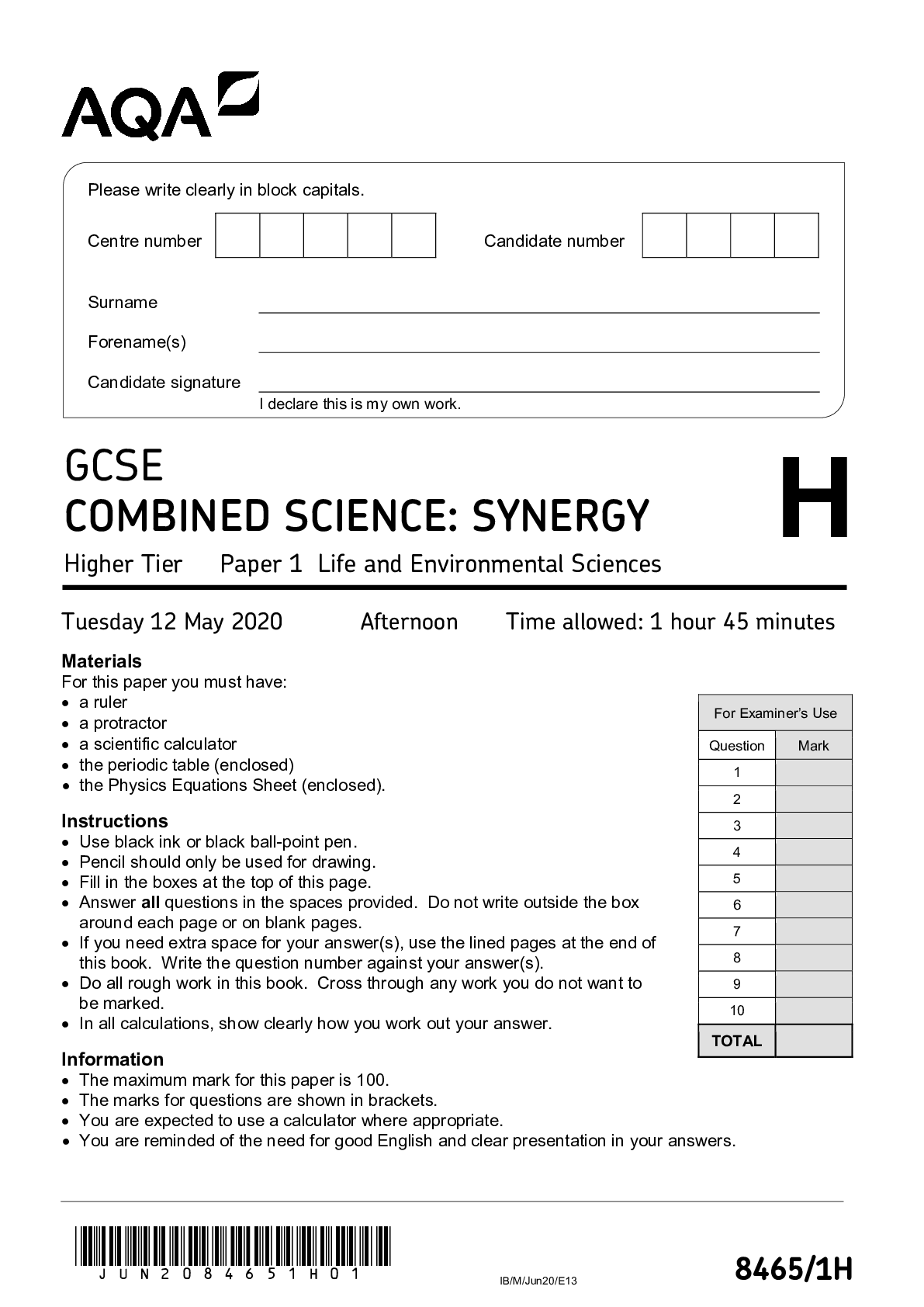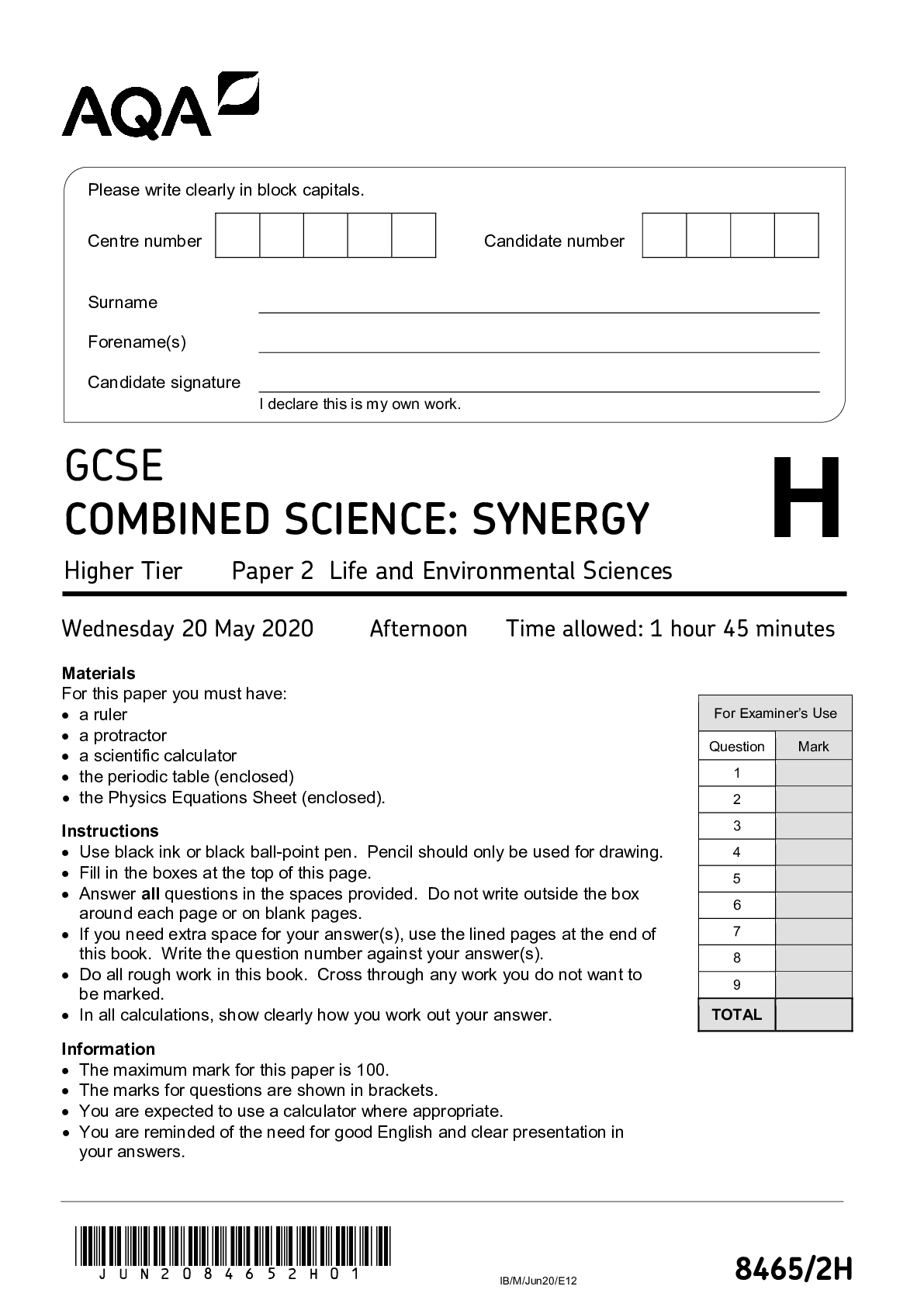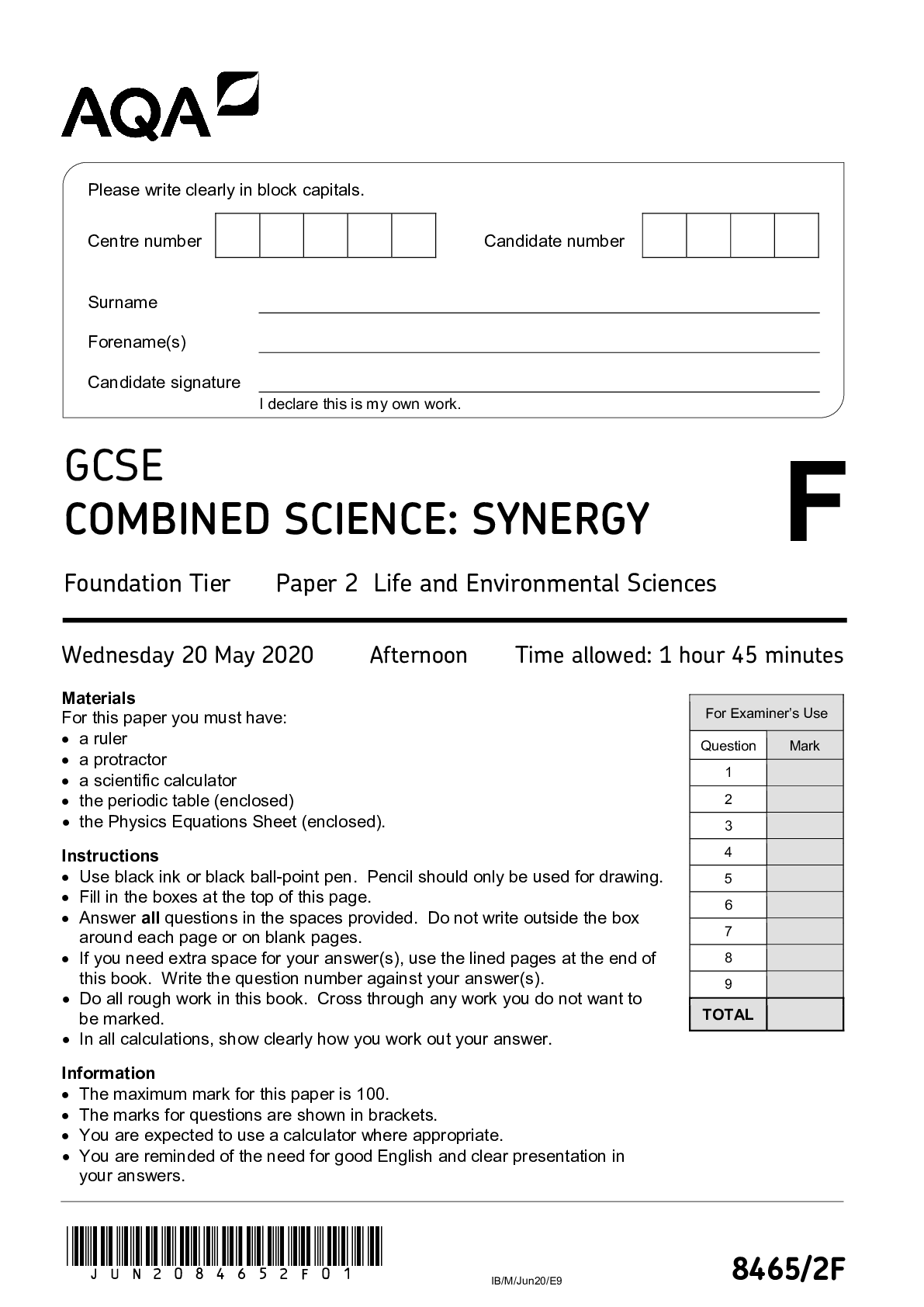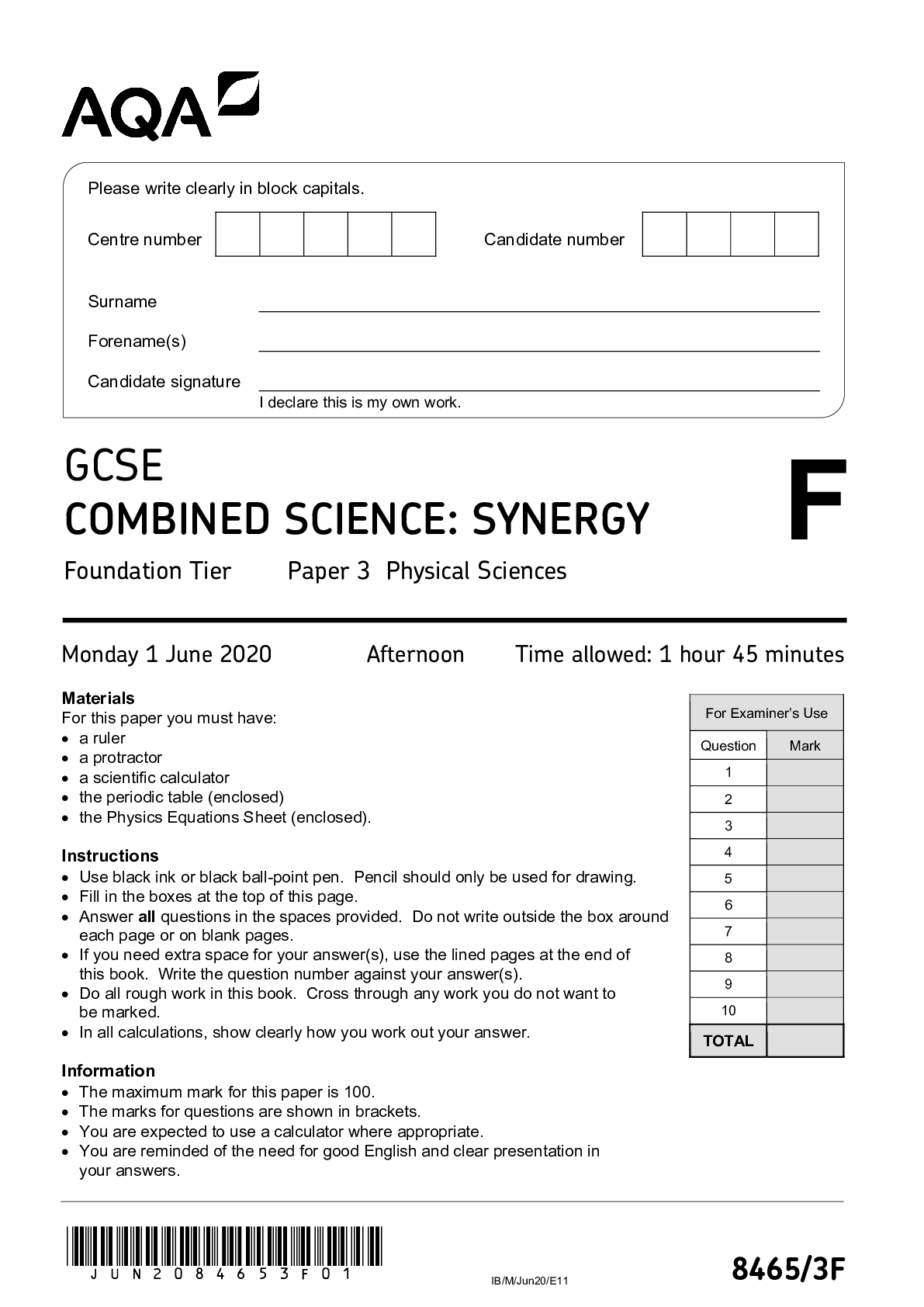Chemistry > QUESTION PAPER (QP) > AQA 2022// GCSE COMBINED SCIENCE: TRILOGY Higher Tier Chemistry Paper 2H (All)
AQA 2022// GCSE COMBINED SCIENCE: TRILOGY Higher Tier Chemistry Paper 2H
Document Content and Description Below
Materials For this paper you must have: • a ruler • a scientific calculator • the periodic table (enclosed). Instructions • Use black ink or black ball-point pen. • Pencil should only... be used for drawing. • Fill in the boxes at the top of this page. • Answer all questions in the spaces provided. • If you need extra space for your answer(s), use the lined pages at the end of this book. Write the question number against your answer(s). • Do all rough work in this book. Cross through any work you do not want to be marked. • In all calculations, show clearly how you work out your answer. Information • The maximum mark for this paper is 70. • The marks for questions are shown in brackets. • You are expected to use a calculator where appropriate. • You are reminded of the need for good English and clear presentation in your answers. Please write clearly in block capitals. Centre number Candidate number Surname Forename(s) Candidate signature I declare this is my own work. GCSE COMBINED SCIENCE: TRILOGY Higher Tier Chemistry Paper 2H H 2 *02* IB/M/Jun22/8464/C/2H 0 1 A student investigated the colours in a brown ink using chromatography. 0 1 . 1 Figure 1 shows the apparatus used. Figure 1 Give two errors made by the student. Describe the problem each error would cause. [4 marks] Error 1 Problem 1 Error 2 Problem 2 Do not write outside the box 3 *03* Turn over ► IB/M/Jun22/8464/C/2H Do not write outside the A different student set up the apparatus correctly. box Figure 2 shows the results. Figure 2 0 1 . 2 Give two conclusions the student can make from Figure 2 about the four colours in the brown ink. [2 marks] 1 2 Question 1 continues on the next page 4 *04* IB/M/Jun22/8464/C/2H Do not write outside the box 10 0 1 . 3 Why was the green colour still on the start line at the end of the experiment? [1 mark] Tick () one box. The experiment was left for too long. The green colour was insoluble in the solvent. The green spot contained too many colours. The green spot was too small. 0 1 . 4 A student calculated the Rf value of a colour to be 0.24 The colour moved 1.8 cm from the start line. Calculate the distance the solvent moved. Use the equation: Rf = distance moved by colour distance moved by solvent [3 marks] Distance moved by solvent = cm 5 *05* Turn over ► IB/M/Jun22/8464/C/2H Do not write outside the box 0 2 . 1 Water that is safe to drink is called potable water. Compare how easily potable water can be obtained from: • waste water (sewage) • ground water (fresh water). [6 marks] Question 2 continues on the next page 6 *06* IB/M/Jun22/8464/C/2H Do not write outside the box 10 A scientist produced potable water from 150 cm3 of salty water. 0 2 . 2 Which process can be used to produce potable water from salty water? [1 mark] Tick () one box. Distillation Electrolysis Filtration Sterilisation 0 2 . 3 The salty water contains sodium chloride. The scientist collected 2.40 g of sodium chloride from 150 cm3 of salty water. Calculate the concentration of sodium chloride in grams per dm3 [3 marks] Concentration of sodium chloride = g/dm3 7 *07* Turn over ► IB/M/Jun22/8464/C/2H Do not write outside the box 0 3 This question is about the reaction between sodium thiosulfate solution and hydrochloric acid. The equation for the reaction is: Na2S2O3(aq) + 2 HCl(aq) → 2 NaCl(aq) + H2O(l) + SO2(g) + S(s) 0 3 . 1 The mass of the conical flask and contents was greater at the start of the reaction than at the end. Explain why. [2 marks] Question 3 continues on the next page 8 *08* IB/M/Jun22/8464/C/2H Do not write outside the A teacher demonstrated the reaction between sodium box thiosulfate solution and hydrochloric acid. Figure 3 shows the experiment. The experiment was done in a fume cupboard. Figure 3 This is the method the teacher used. 1. Pour 50 cm3 of sodium thiosulfate solution into a conical flask. 2. Put the conical flask on a black cross drawn on a piece of paper. 3. Pour 10 cm3 of hydrochloric acid into the conical flask and start a timer. 4. Stop the timer when the cross can no longer be seen. 5. Repeat the experiment at different temperatures. 0 3 . 2 What type of variable is time in this reaction? [1 mark] Tick () one box. Control Dependent Independent 9 *09* Turn over ► IB/M/Jun22/8464/C/2H Do not write outside the 0 3 box . 3 Table 1 shows the results. Table 1 Temperature in °C Time in seconds 19 82 32 48 45 43 52 15 63 7 73 3 Complete Figure 4. You should: • plot the data from Table 1 on Figu [Show More]
Last updated: 2 years ago
Preview 1 out of 24 pages
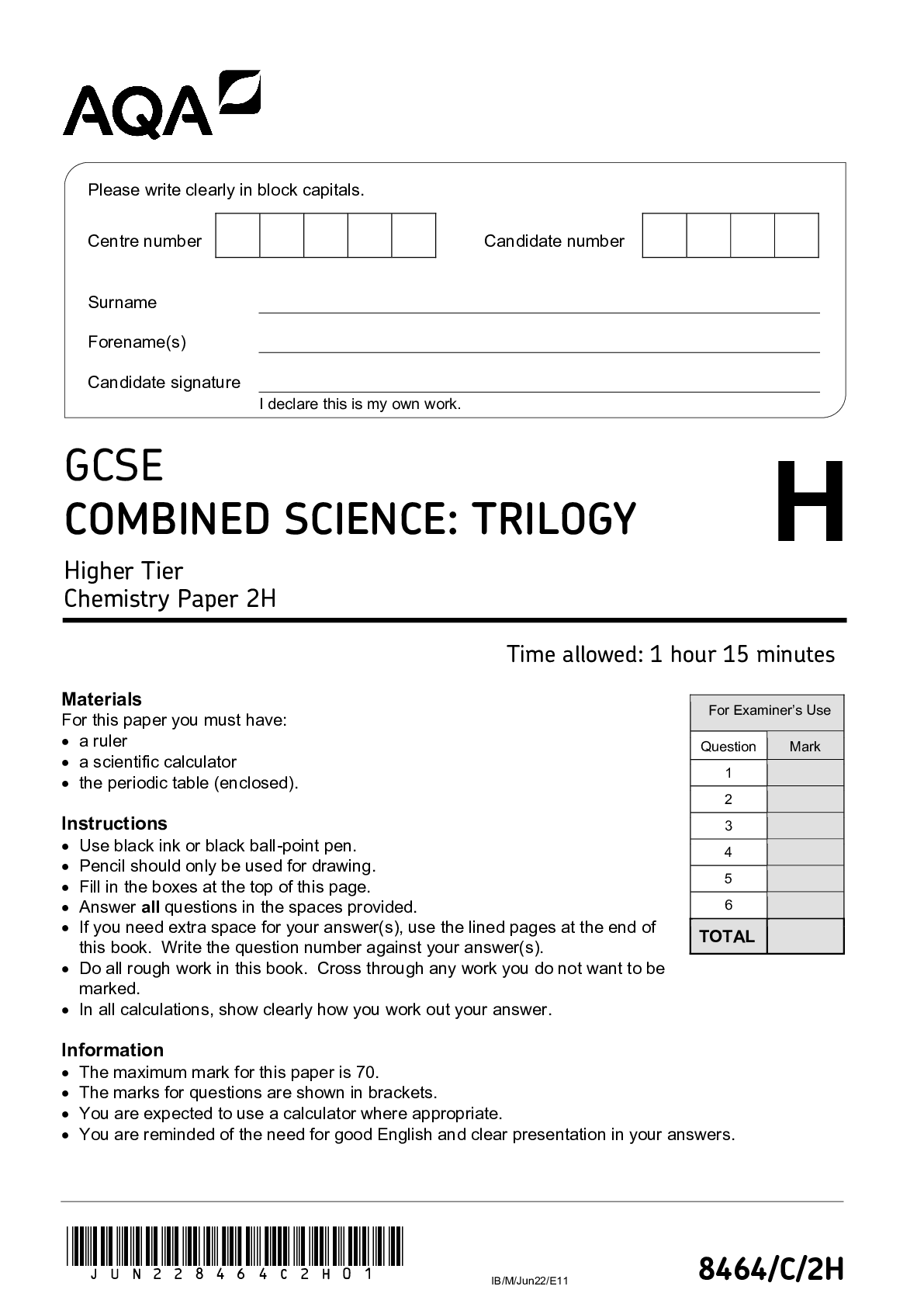
Buy this document to get the full access instantly
Instant Download Access after purchase
Buy NowInstant download
We Accept:

Reviews( 0 )
$7.00
Can't find what you want? Try our AI powered Search
Document information
Connected school, study & course
About the document
Uploaded On
Apr 04, 2023
Number of pages
24
Written in
Additional information
This document has been written for:
Uploaded
Apr 04, 2023
Downloads
0
Views
139

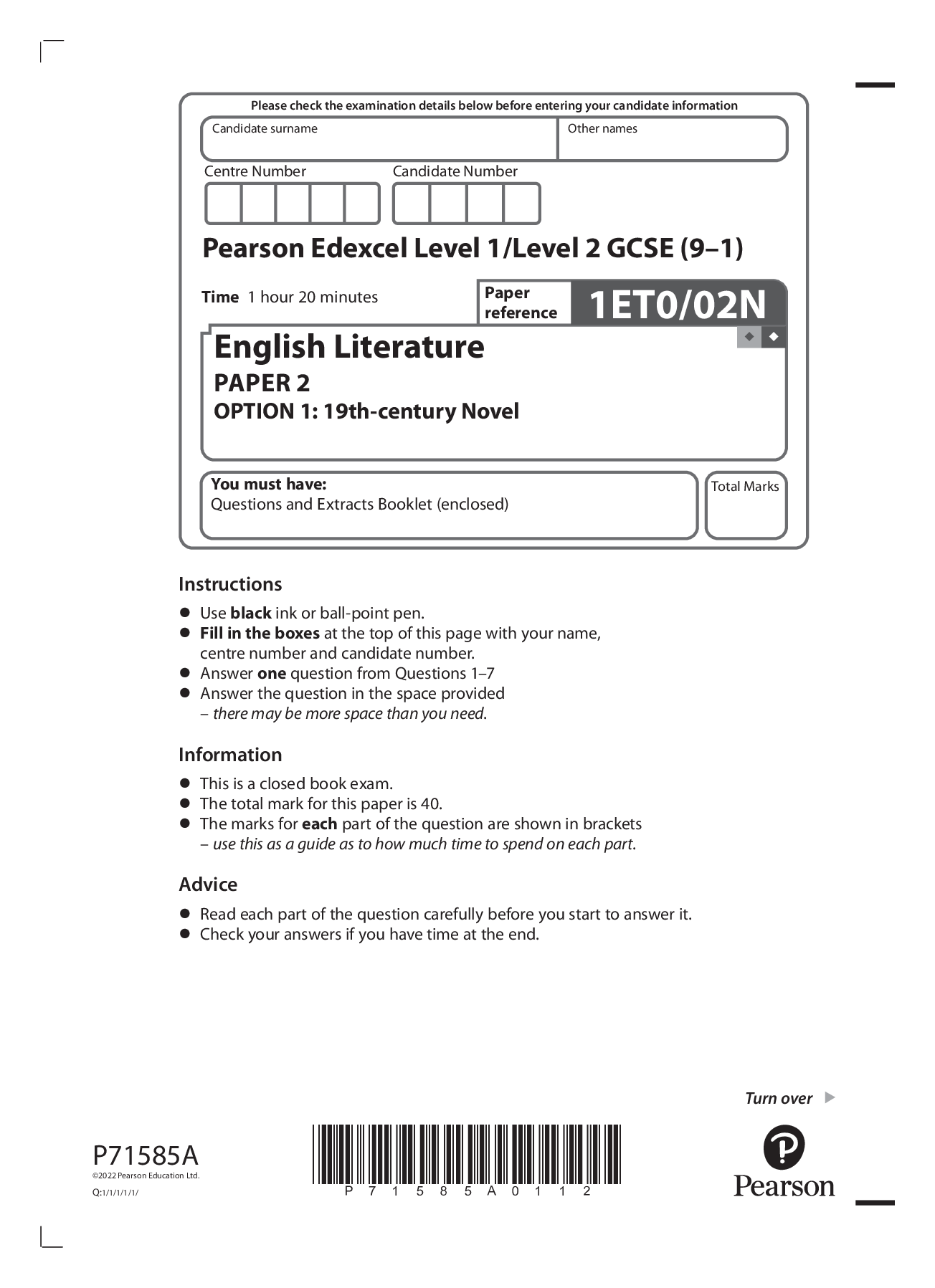
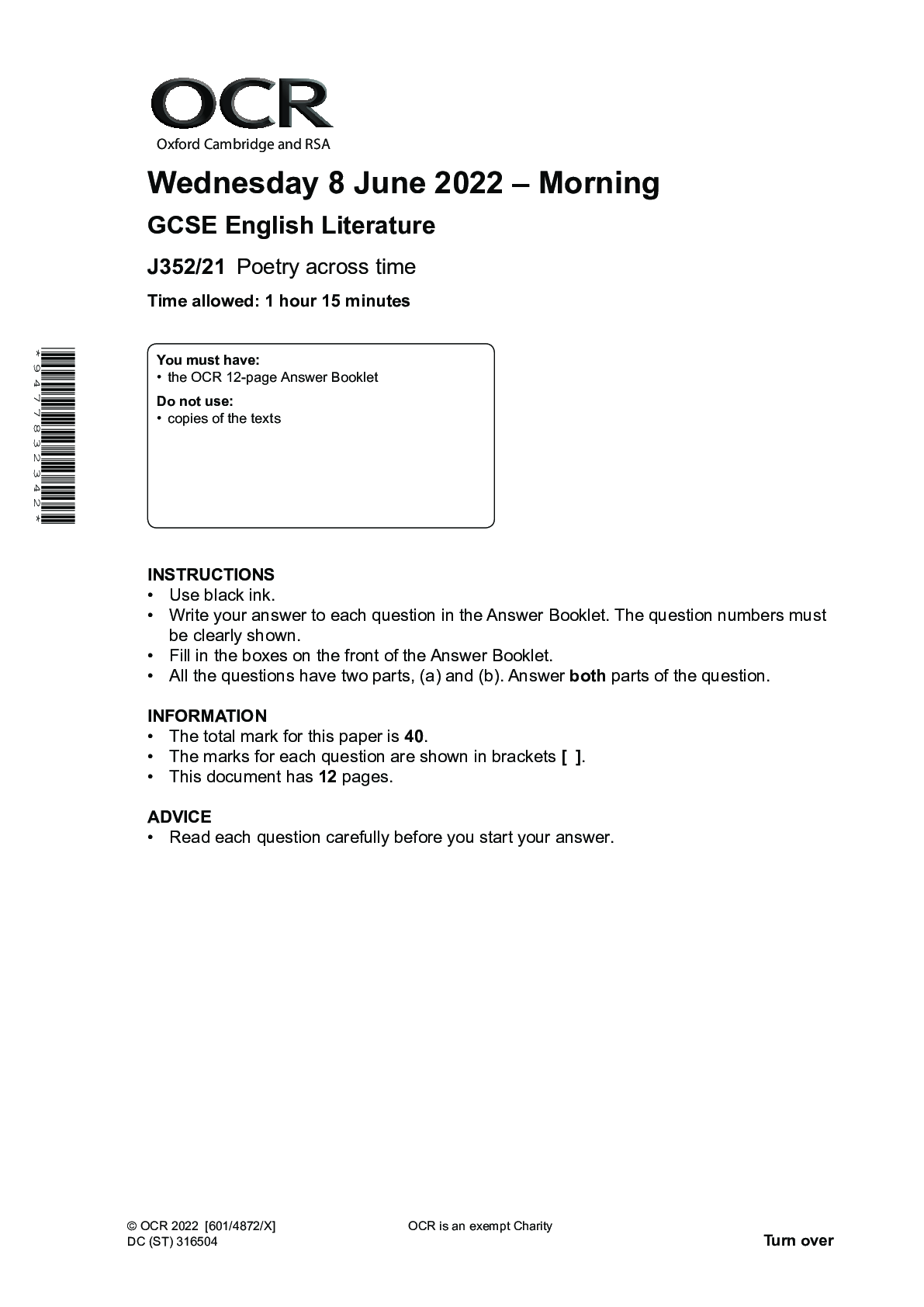
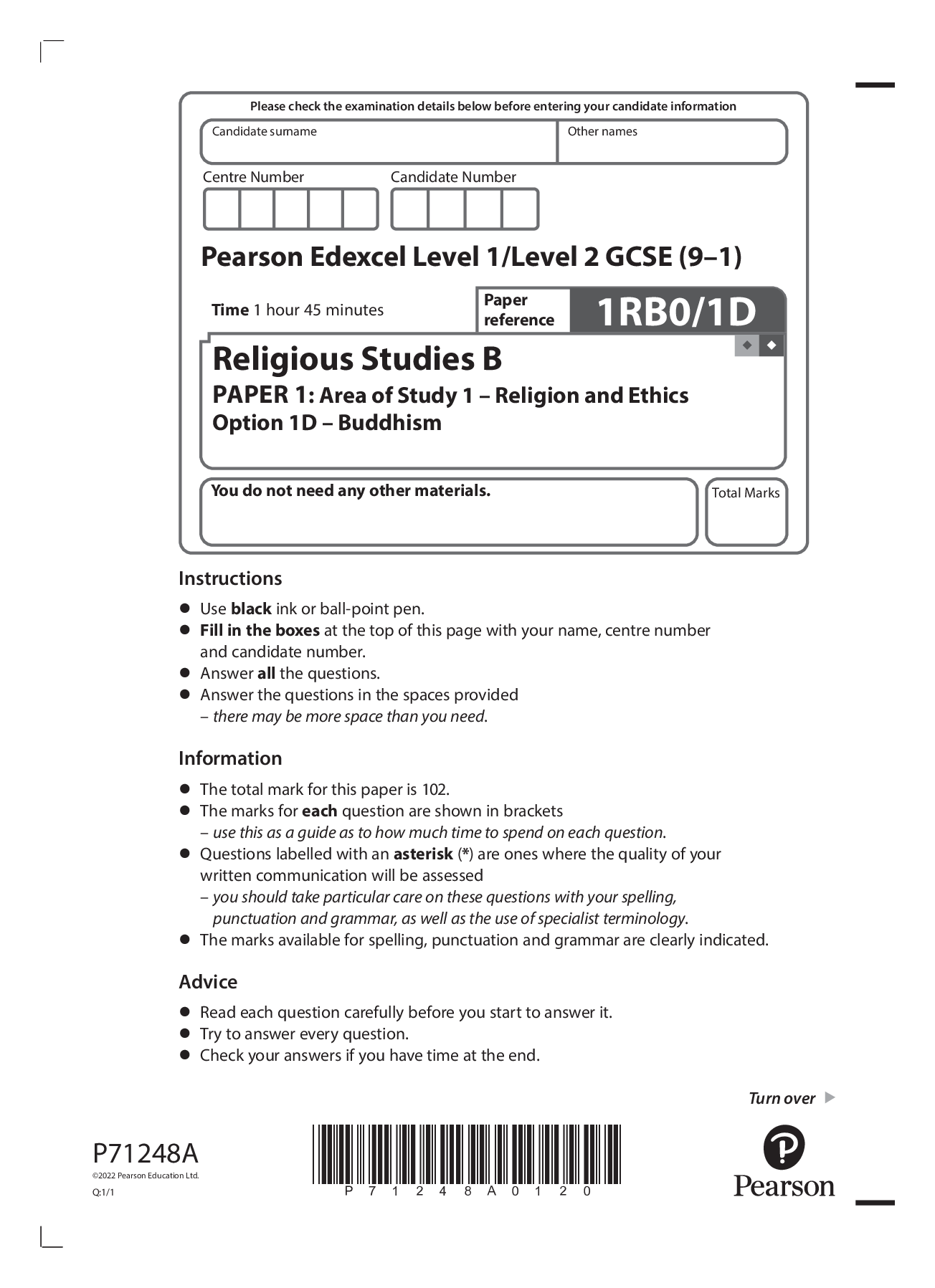
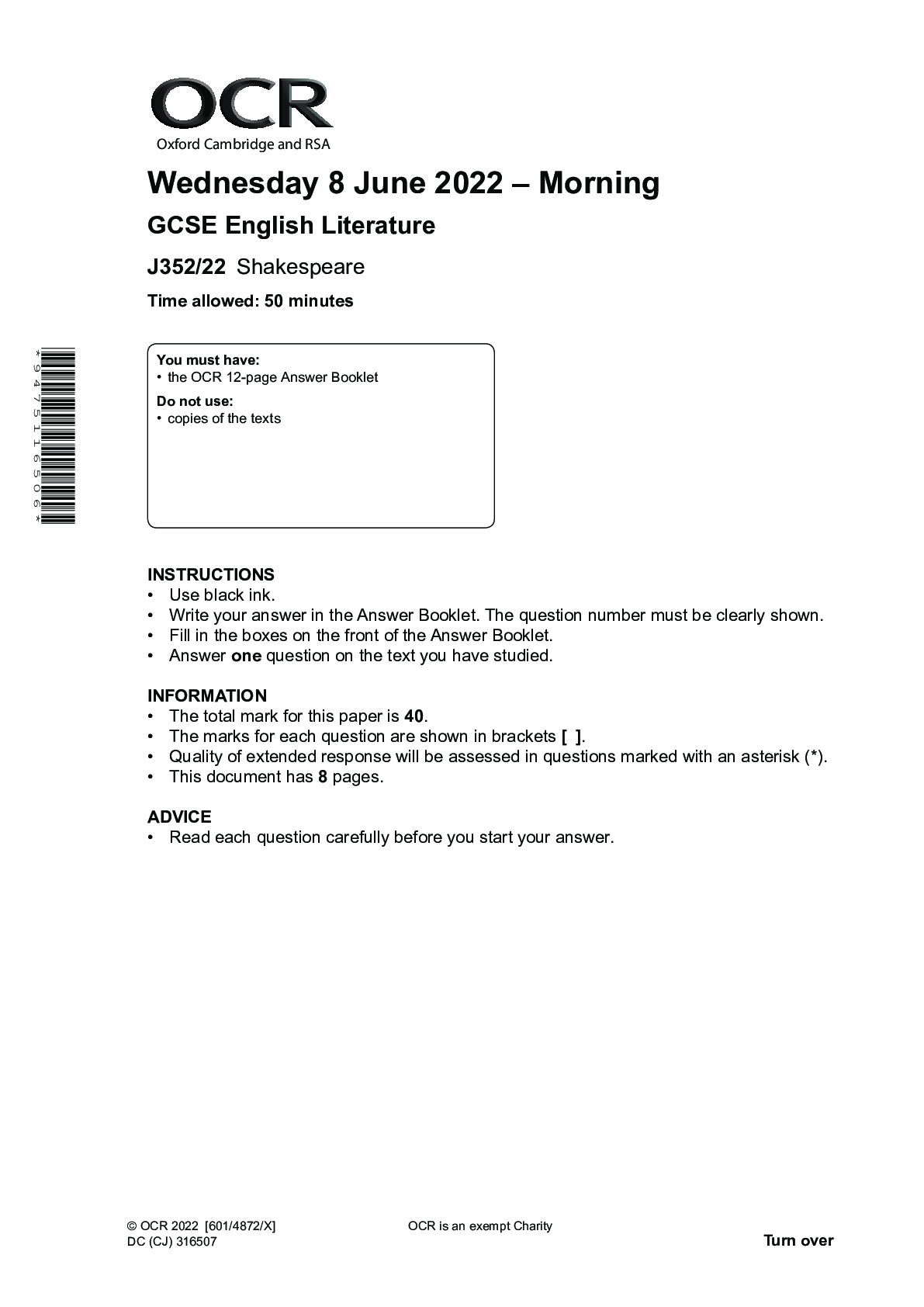
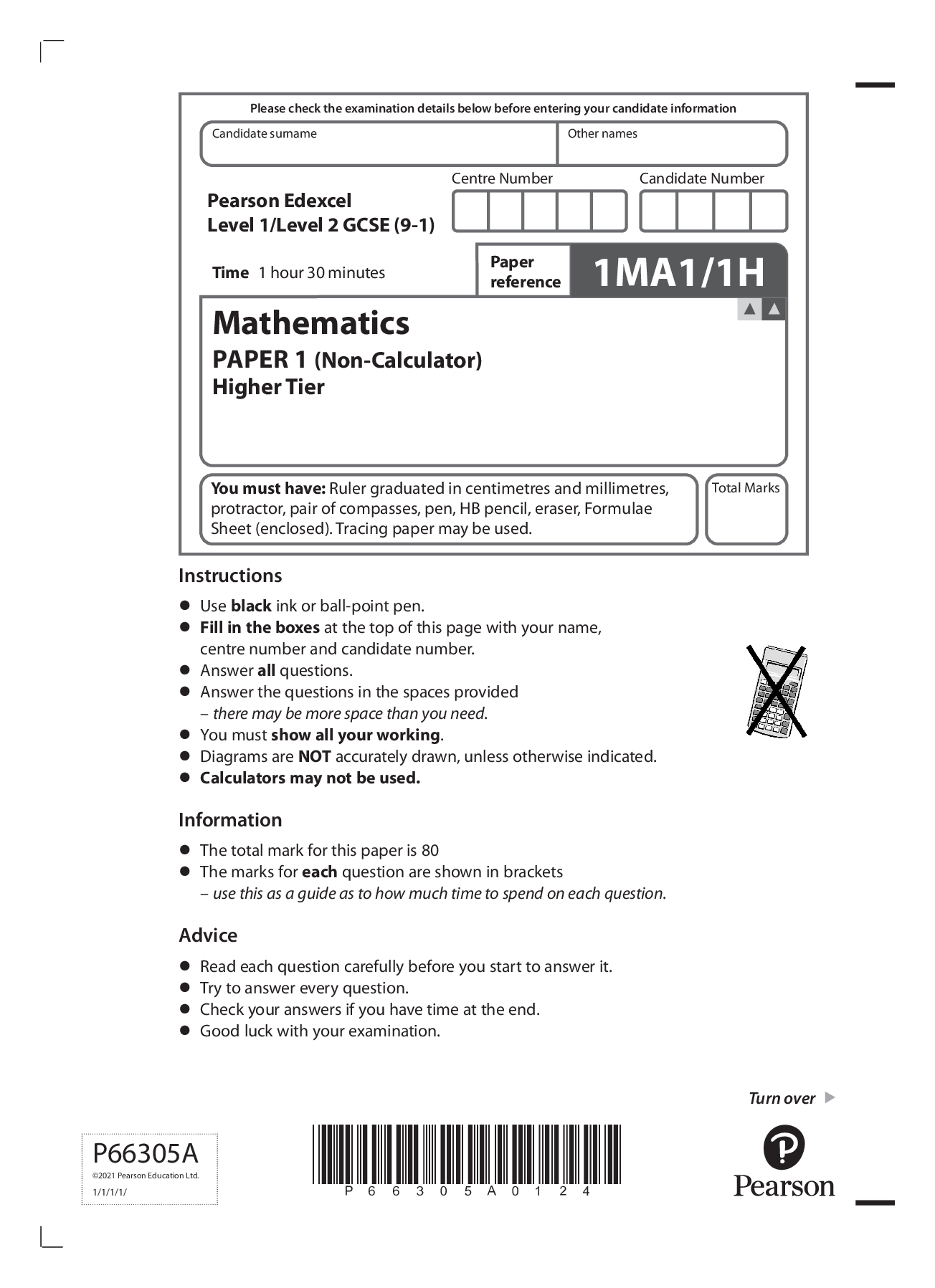
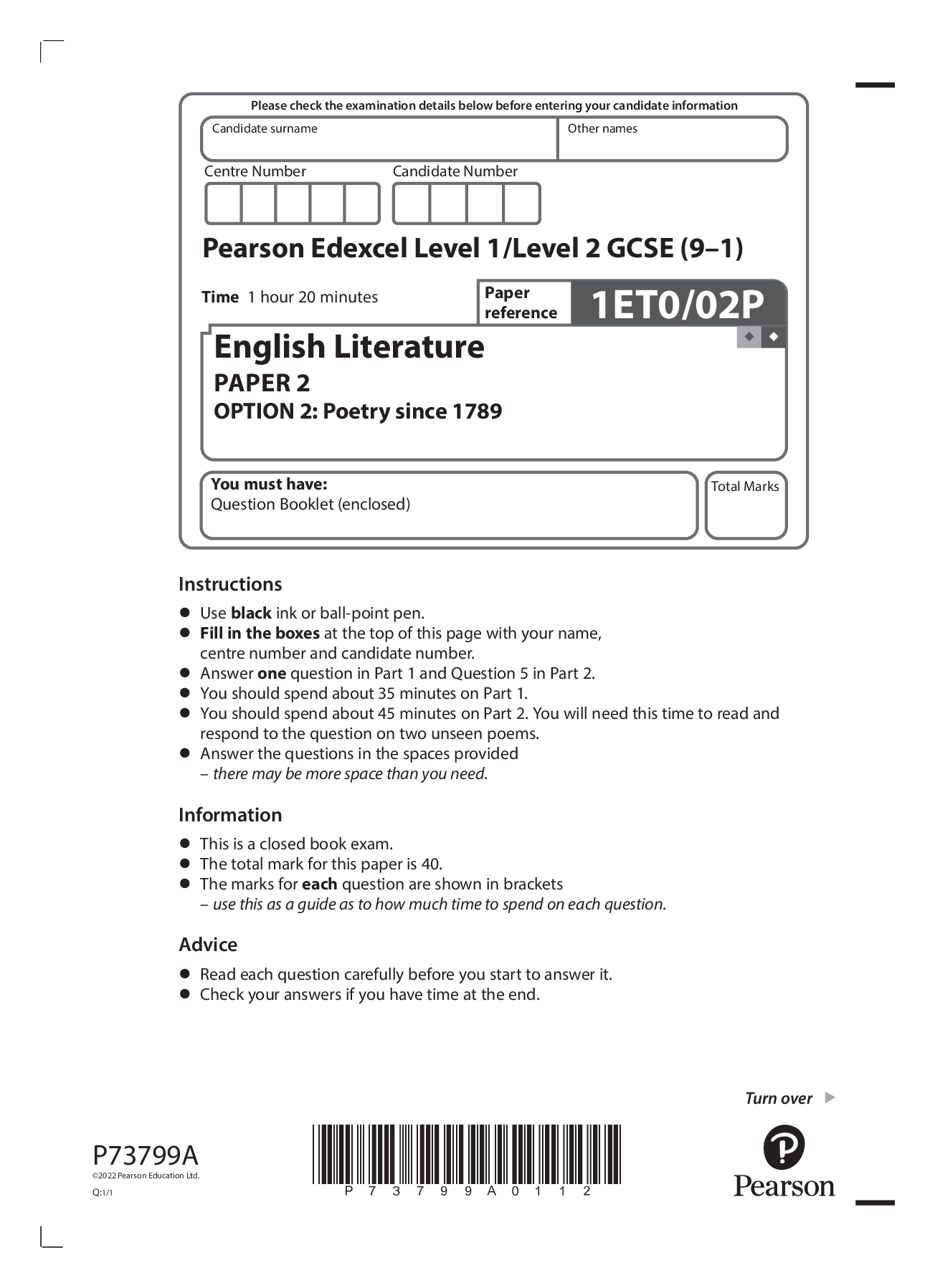
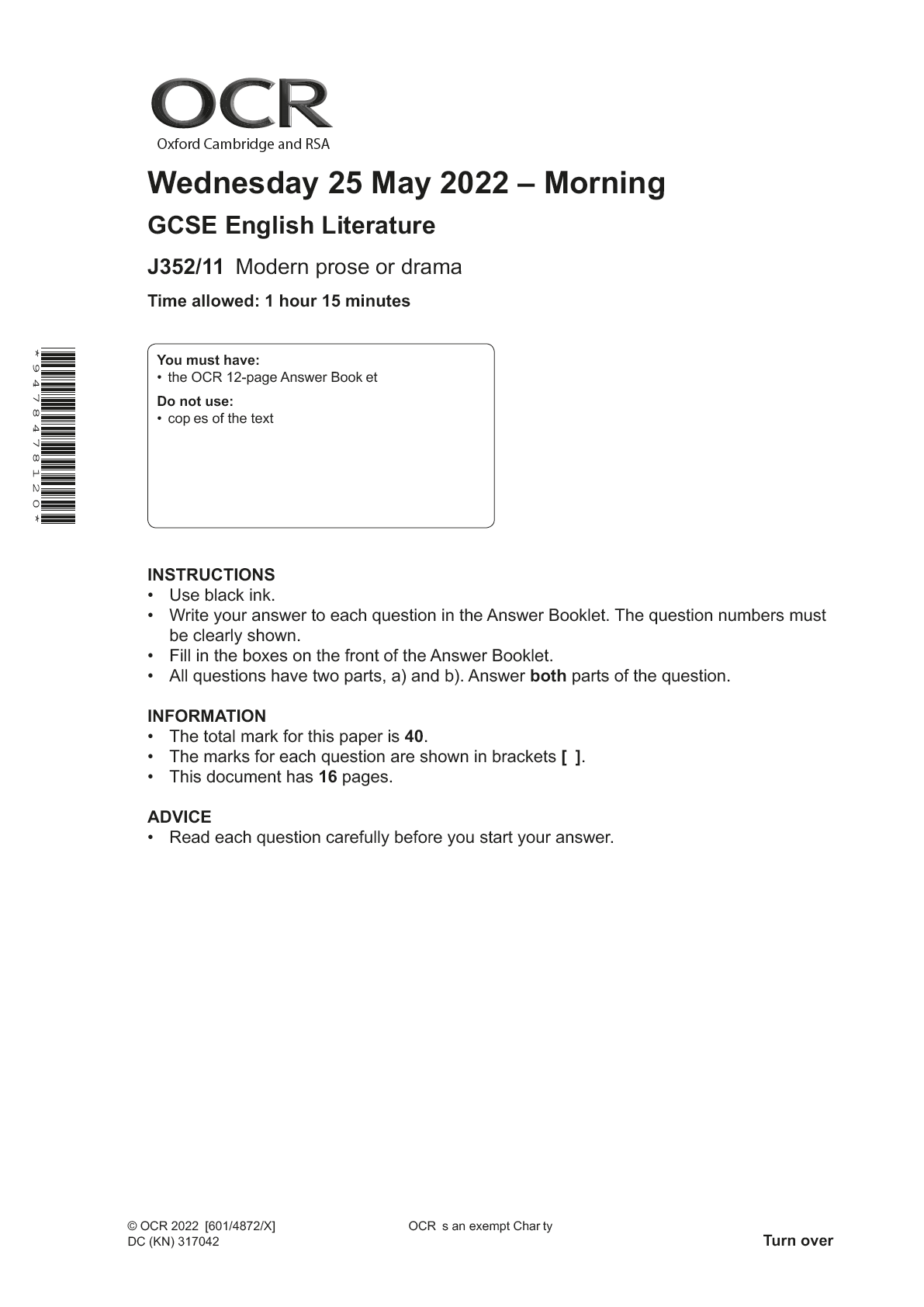
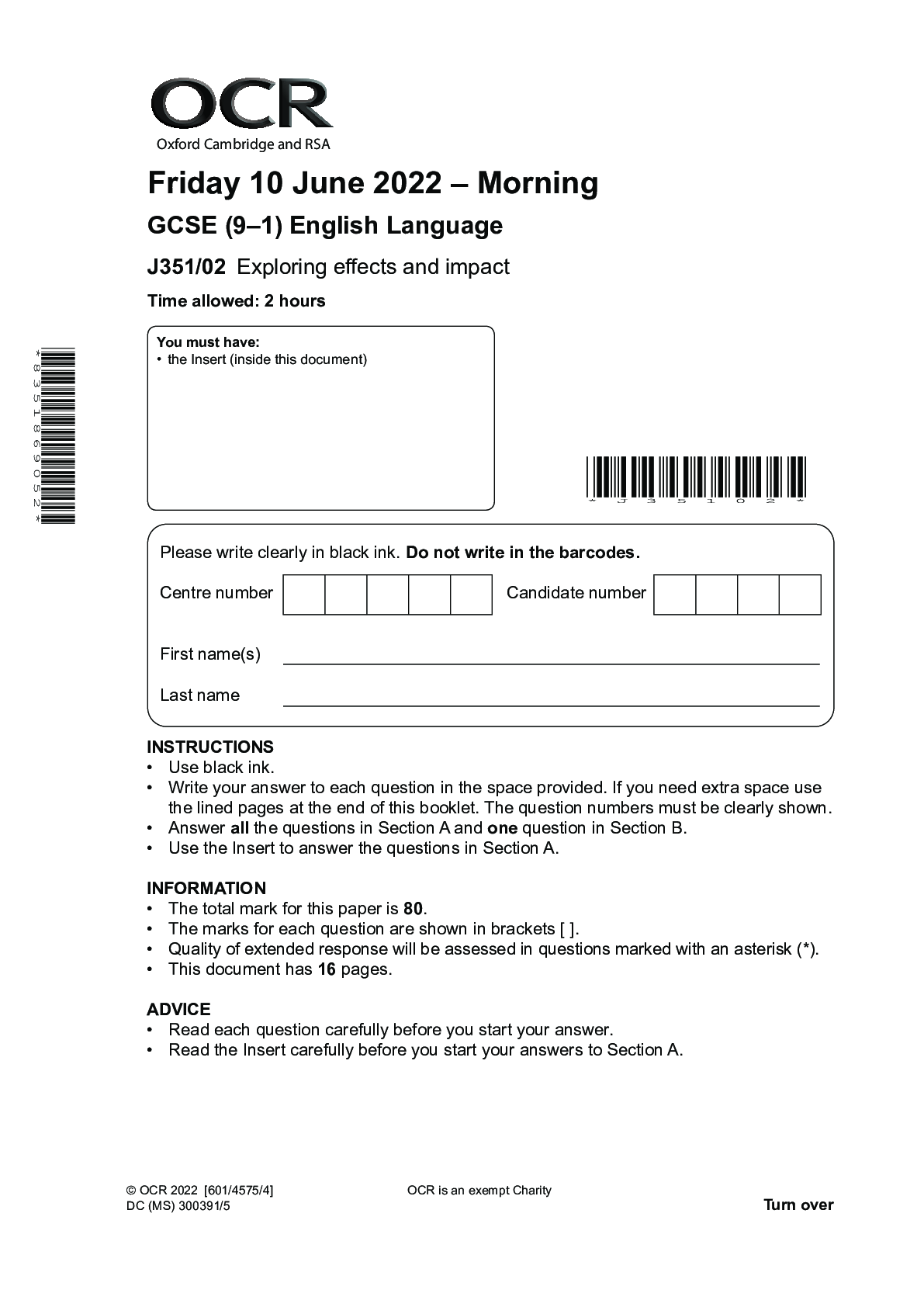
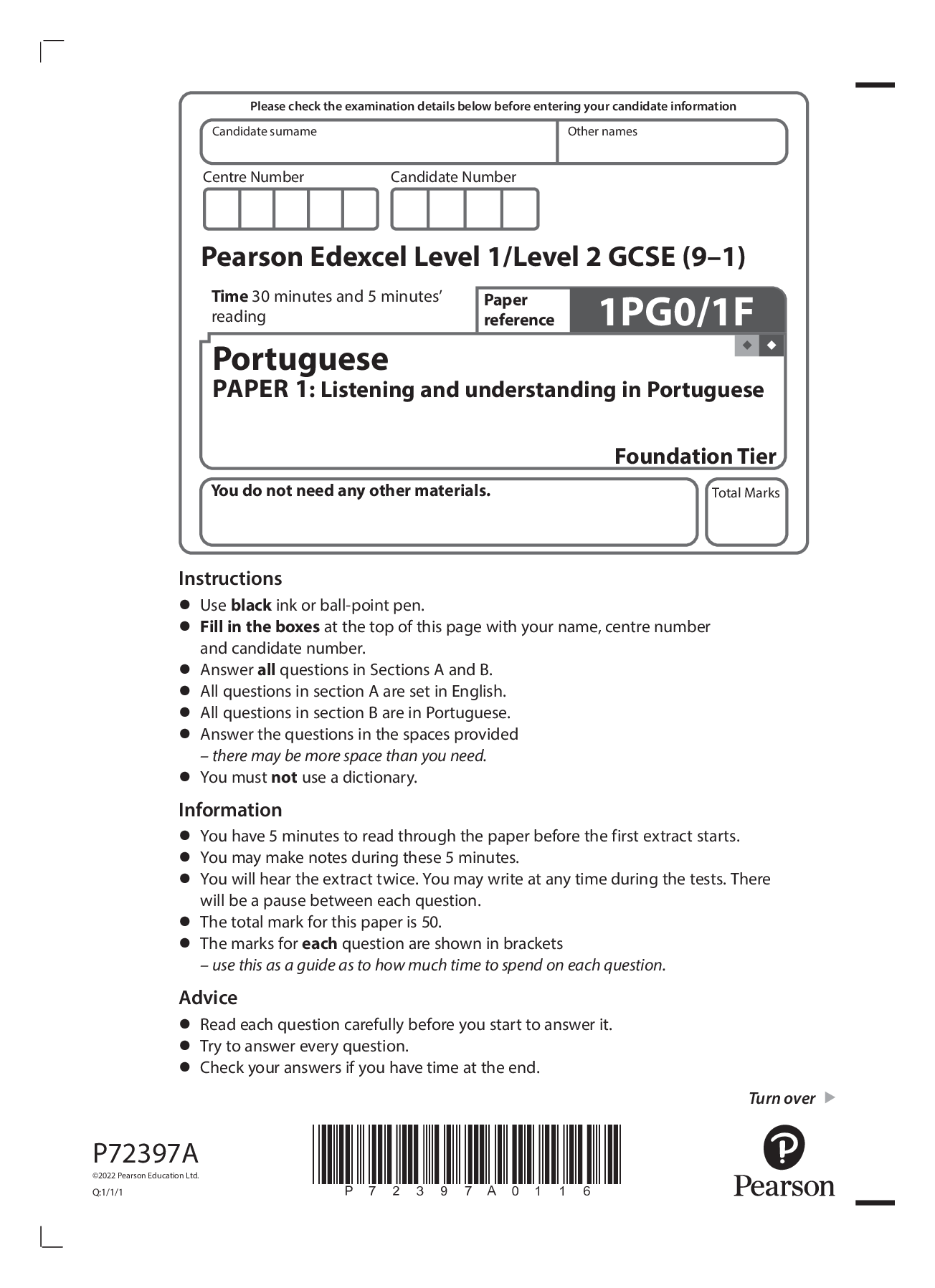
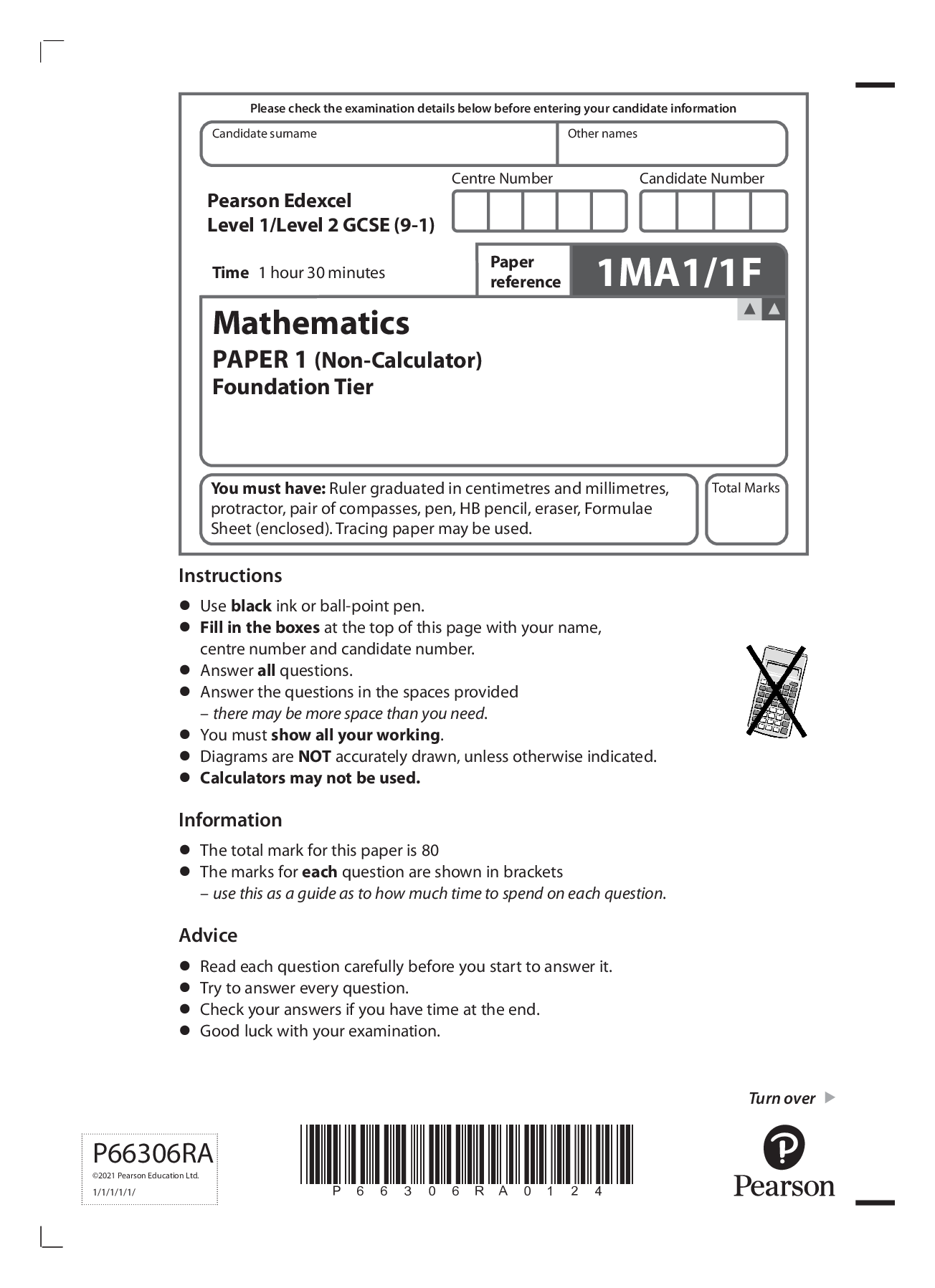
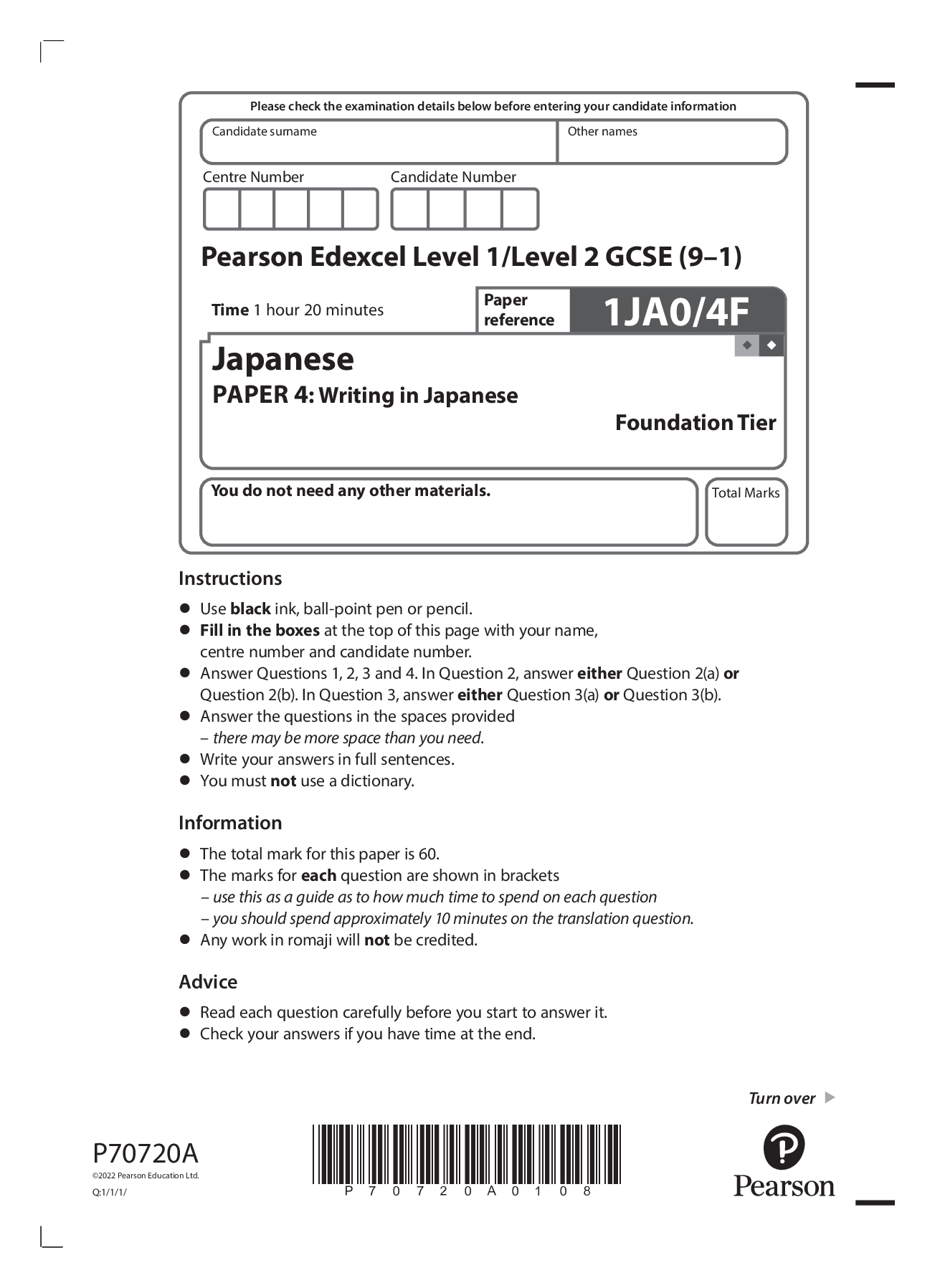
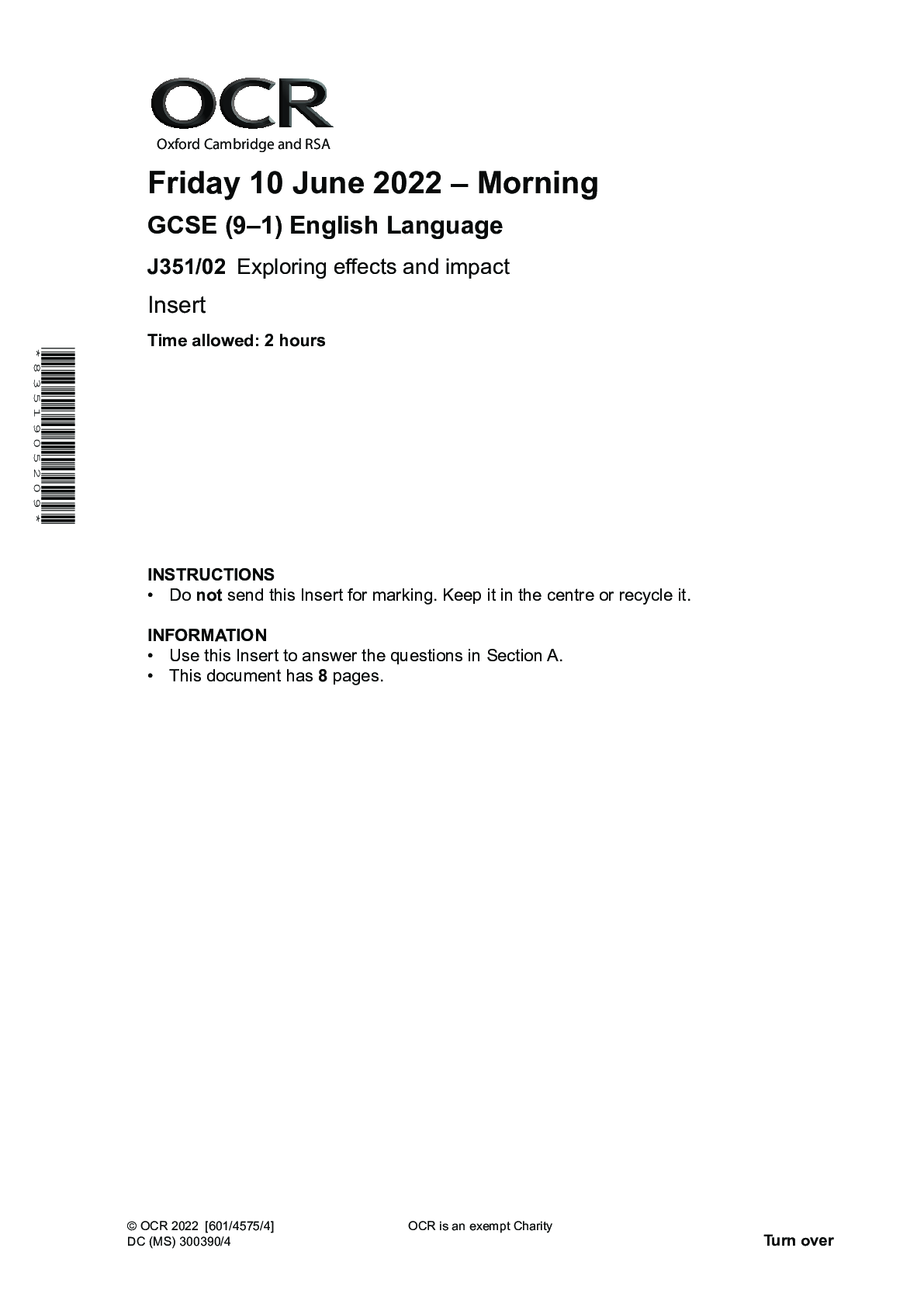
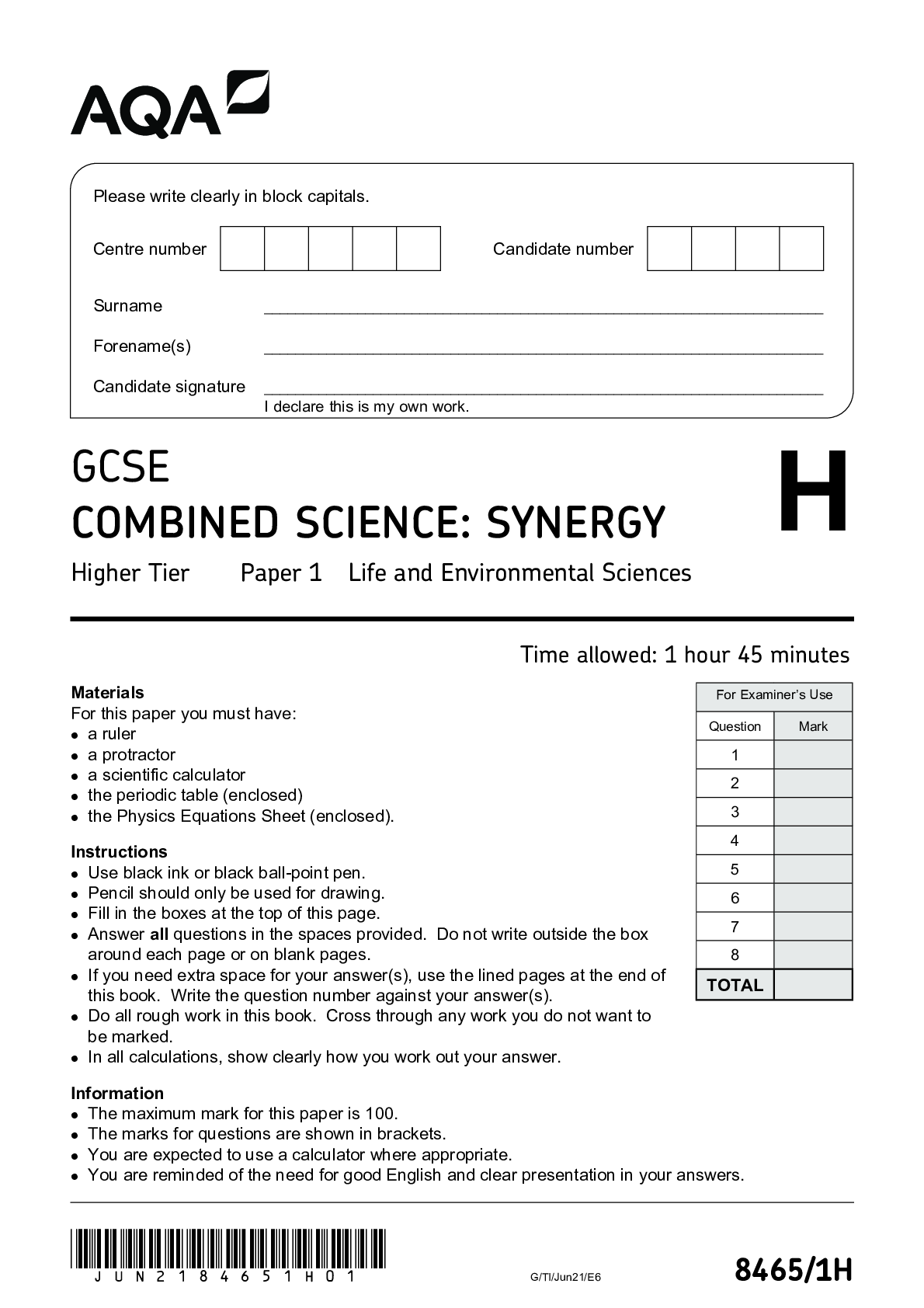
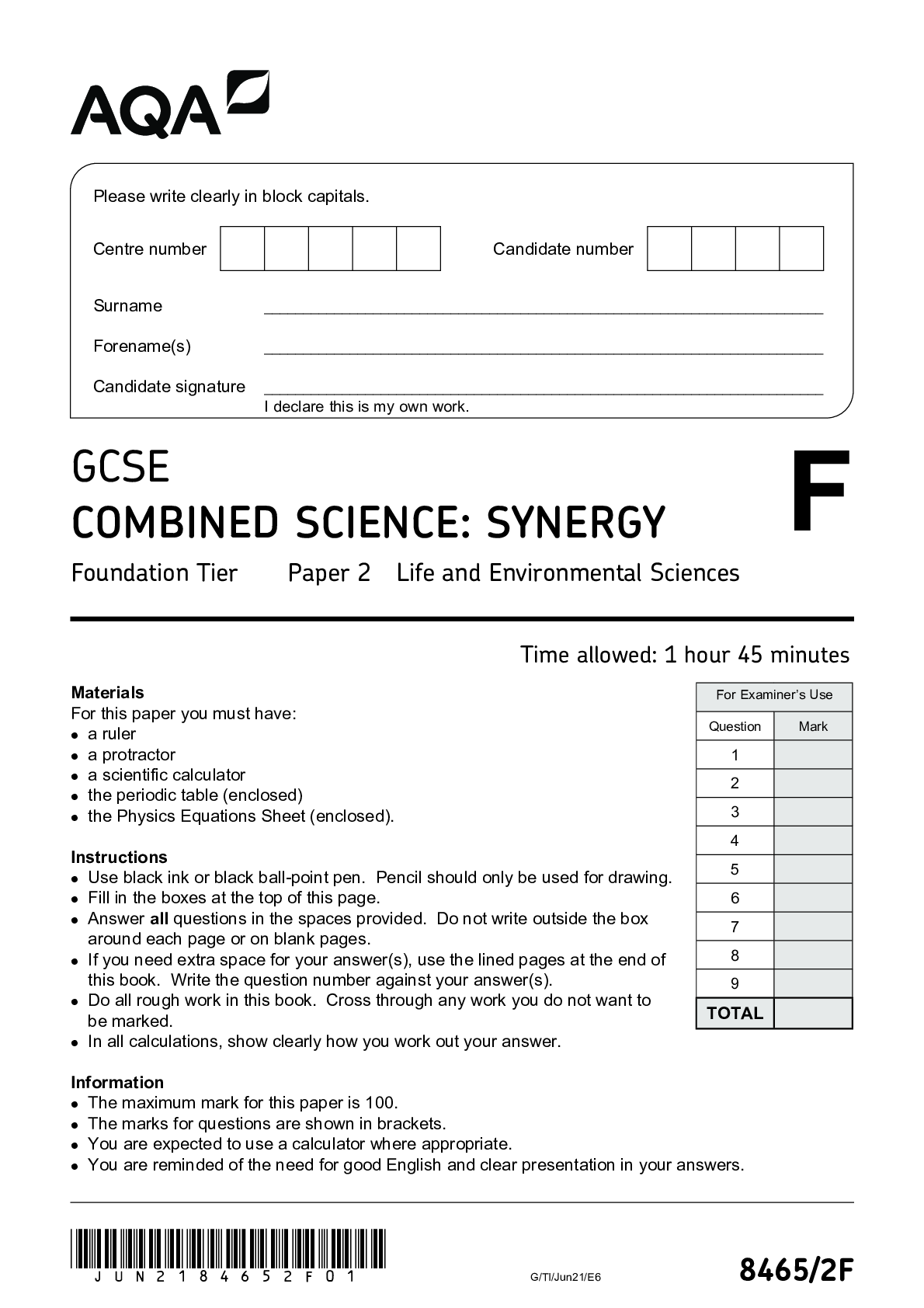
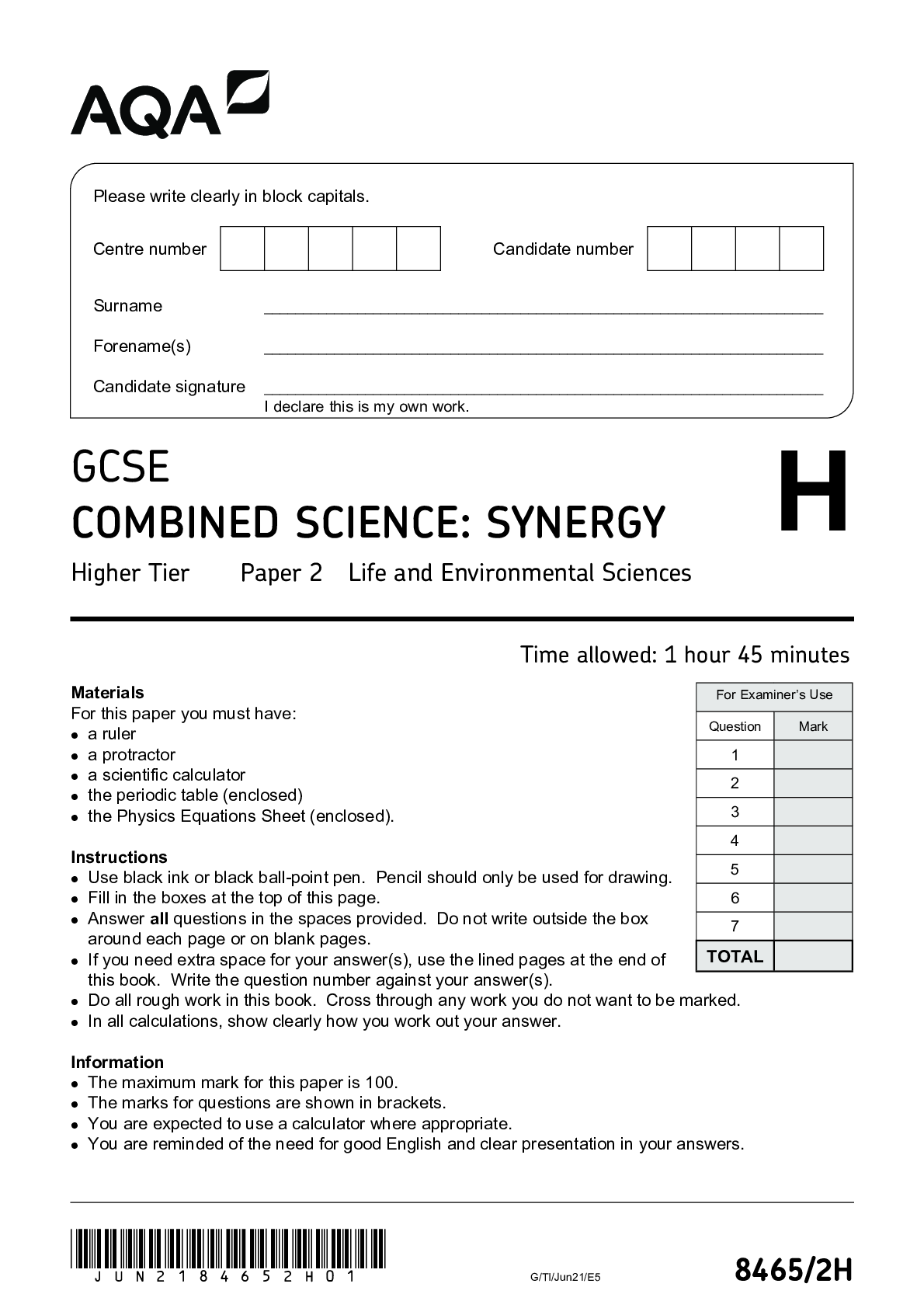
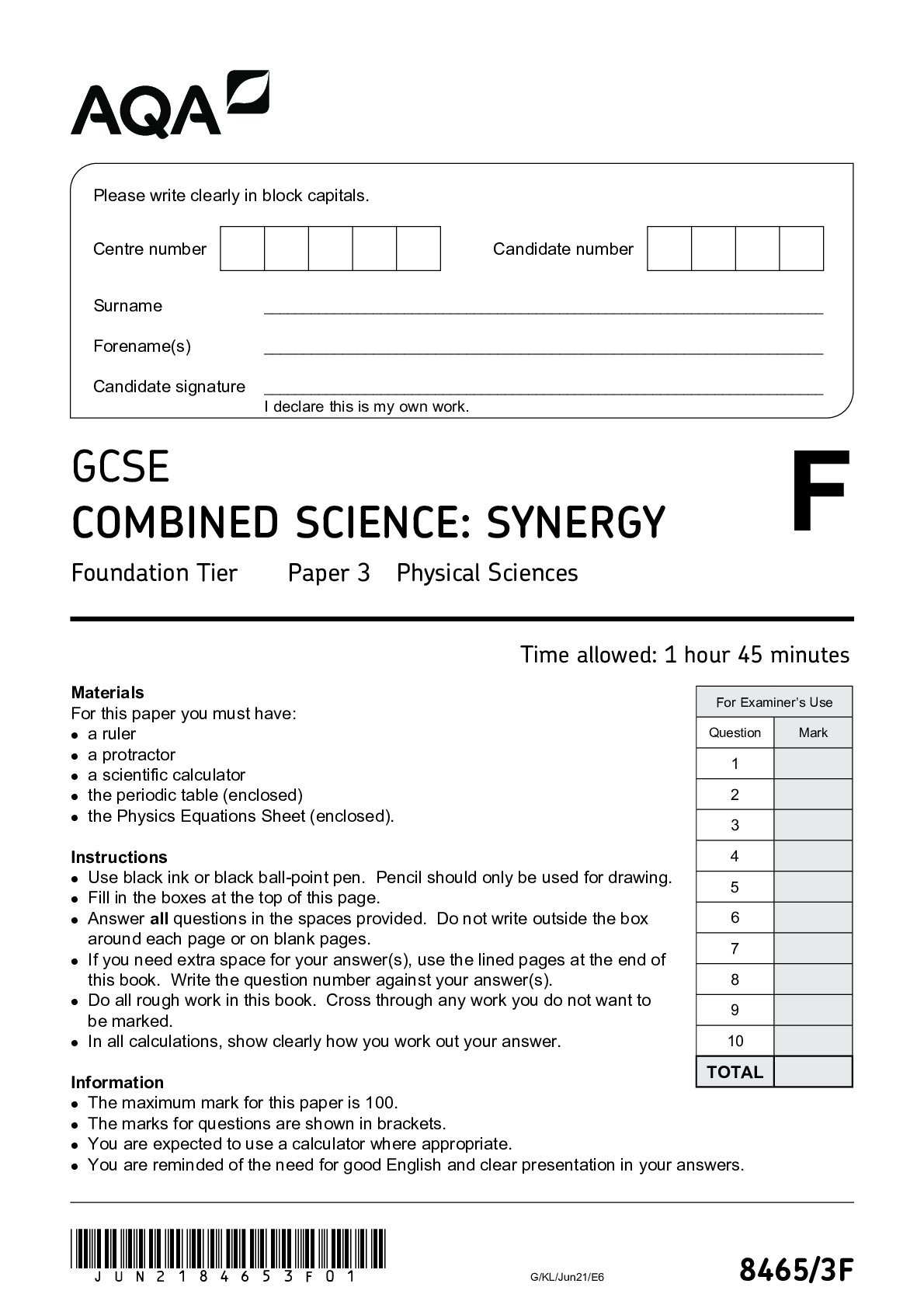
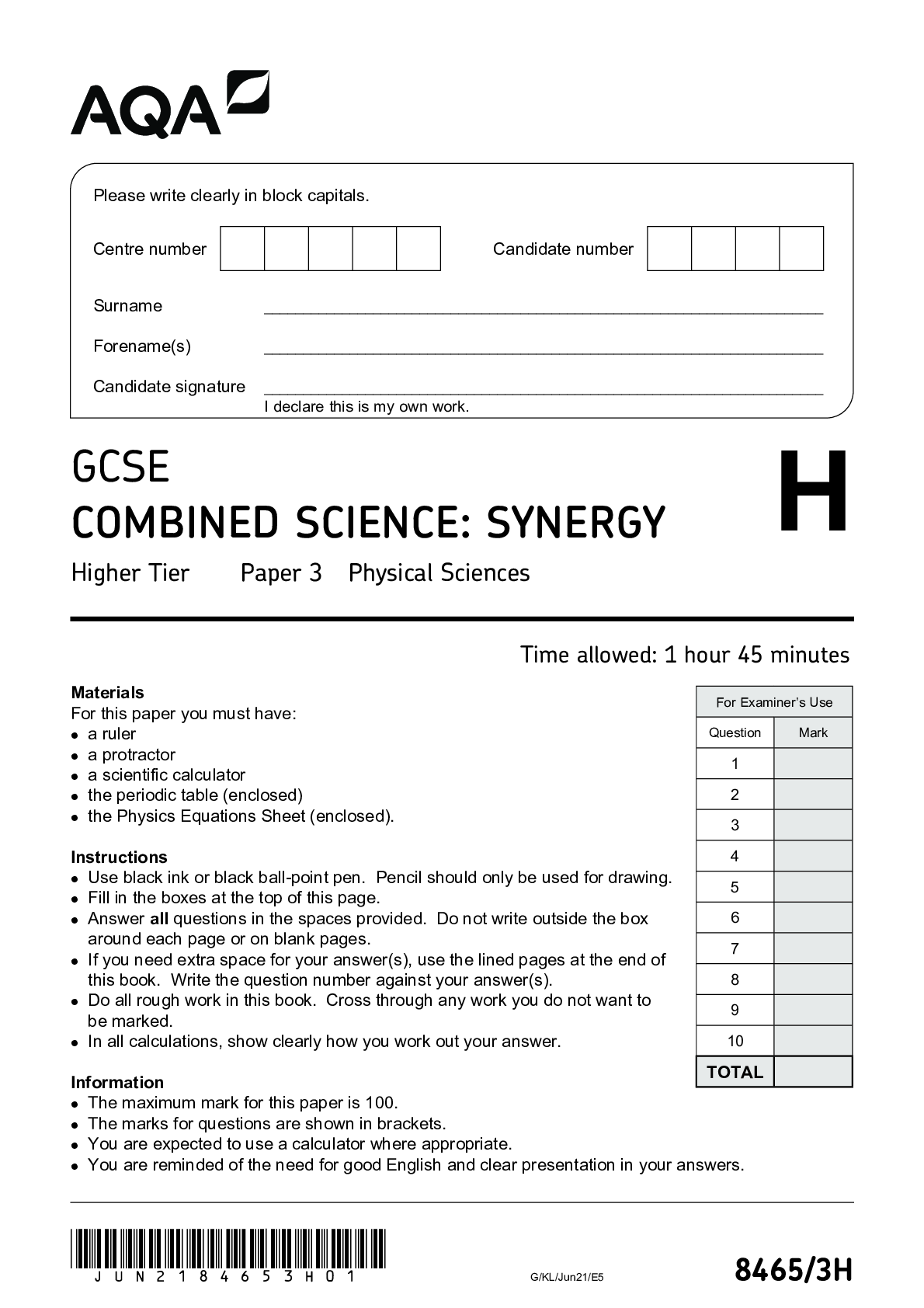

.png)
